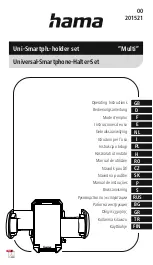
w w w . u q d e v i c e s . c o m
L o g i c 1 6 U s e r M a n u a l
| 59
If the maximum transfer rate is 10 MHz, how can I use the logic unit for time -resolved
measurements with a higher rate pulsed laser?
Using the time-tag filter with a filter width just less than the period of the laser, Logic16 will only
transfer those time tags for which a detection occurred. One can use, e.g. a 80 MHz Ti-Sapphire laser,
and only transfer events of interest (detection corresponding laser signals).
What if I don’t need ALL the possible correlatio
n patterns in coincidence counting
mode? Can I select specific ones?
Yes. Logic16 pre-sifts all possible coincidences that occurred within a given time window and transfers
the meta data to the PC. The PC will receive information about all possible correlations and
the driver will extract only coincidences requested by the user.
What software is available? Can it be customized?
Time Tag Explorer – test installation and operation of the Logic16. This is to be used for initial set-up
trouble-shooting, but does not provide data acquisition (saving) capability.
UQD Logic Counter – basic coincidence counting and data recording
Customization – UQDevices suggests that experimentalists develop a customized data acquisition
software in their preferred DAQ environment (LabView, C#, Matlab, etc.). If you have questions,
requests or feedback regarding available software please contact us.
Does the Logic16 unit come with a power supply?
No. The unit has an input port for a DC power supply ( 12V/≥1.5 A ) or can be powered by NIM crate (+
12V/1A , -12V/0.5A). An example of a compatible DC power supply is here.
Can two or more Logic16 units be used together to increase the number of channels
Yes. One can use n x Logic16 units to effectively obtain n*15 channels.
This is accomplished by syncing the units using a time reference signal. To do so, split a time reference
signal (e.g. 1 kHz signal from a function generator) and input this reference into one channel on each
unit. For example, two Logic16 units were used to employ 30 channels to time-tag a SPAD array in the
following experiments:


































